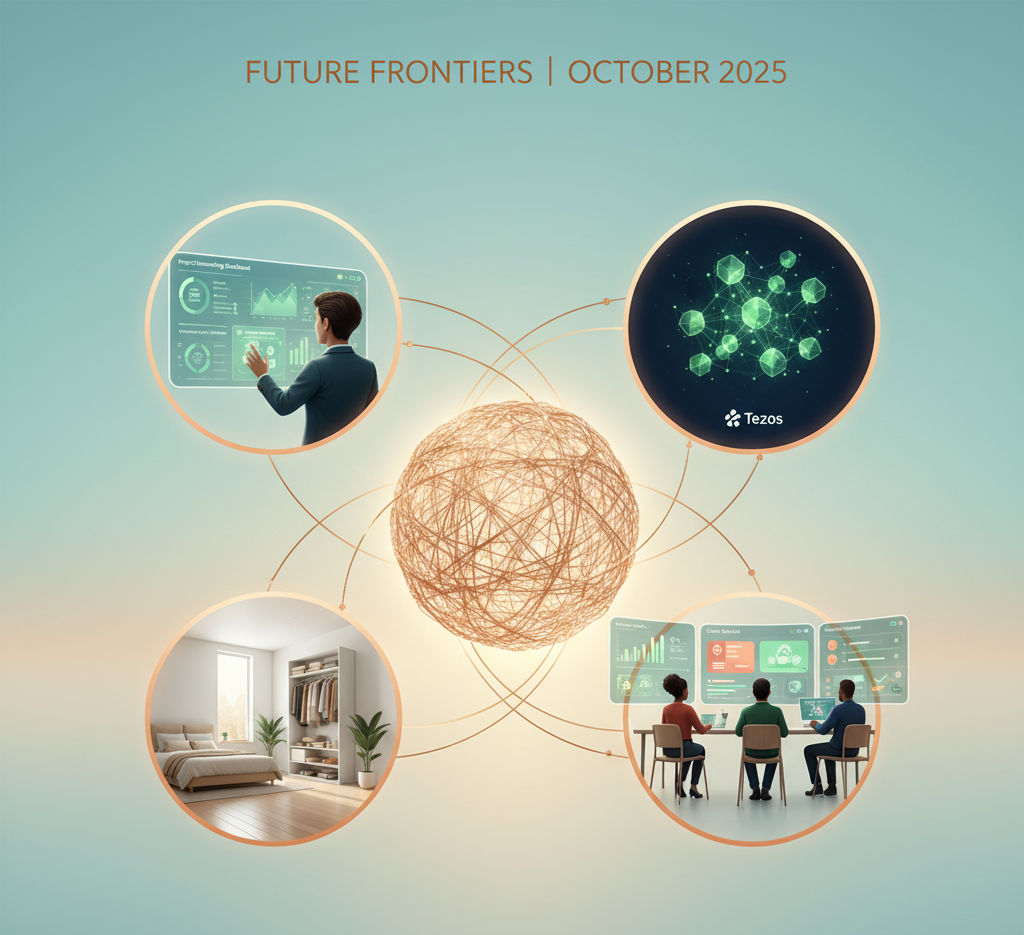Best Free Resources for Traders in 2025: From Charts to AI Alerts
December 01 , 2025

Explore October 2025’s purpose-driven trends—impact investing, Tezos growth, career upskilling platforms, and minimalist living. Practical insights for investors, professionals, and mindful consumers.
October 2025 bursts with a richly woven tapestry of change-making currents, knitting threads to purpose and understanding. From investments driving social good to blockchains empowering environmentally conscious wealth, platforms honing career competencies to lifestyles living simply, four trends command the zeitgeist. This story uncovers impact investing trends 2025, Tezos investment 2025, career upskilling platforms 2025, and minimalist living trends 2025—beacons for the fearless to seize. Dive into the dynamism; in this luminous age, inertia invites eclipse.
Envision portfolios that gain while improving society. Impact investing trends 2025 attract 1–2.5 million monthly searches, up 350% year-over-year, according to Forbes and Statista. Investments such as Goldman Sachs' ESG funds and social bonds propel $1 trillion in assets, increasing measurable social impact by about 40%, Bloomberg reports.
What drives this wave? Purpose, emphatically: 80% of investors consider post-2024 crises and social impact first, according to Pew polls. However, shadows exist—greenwashing risks and modestly lower returns (around 10% in some mixes) worry adopters. Still, the influence spreads: impact funds are channeling capital into blockchain-based charities and transparent giving platforms, boosting public trust.
For investors, the door is open. Explore Fidelity's impact funds or Vanguard’s ESG options; many investors now track performance alongside measurable outcomes. In the evolving finance landscape, impact investing is less a fad and more a compass—making money with a conscience.
As October's market winds shift, Tezos investment 2025 garners 2–5 million searches, driven by its low-energy on-chain governance. CoinTelegraph and market trackers project renewed interest in XTZ, with significant staking volumes building in DeFi hubs—Tezos positions itself as a green, upgradeable chain.
Why the interest? Efficiency and governance: Tezos’ liquid proof-of-stake enables on-chain upgrades without hard forks and keeps energy use low, supporting many eco-conscious projects. Institutional partners and developer grants (notable contributions from gaming and arts backers) bolster the ecosystem. Risks remain—dApp density and developer activity can fluctuate, so diversification is advised.
Smart play: stake via Temple Wallet or Kukai and monitor TzStats for network signals. Many observers view Tezos in 2025 as a sustainable option within crypto—appealing to impact-minded investors seeking lower environmental footprints.
Following the remote-work and reskilling waves of the early 2020s, career upskilling platforms in 2025 register 1.5–4 million searches as professionals hunt new skills. Platforms like LinkedIn Learning, Udemy Business, Coursera, and Skillshare offer micro-credentials and employer programs that boost employability and team performance.
Why the momentum? Flexibility and ROI: employers and learners value bite-sized, career-aligned learning—studies show micro-credentials can increase employability by roughly 30–35% and help teams pivot faster. Challenges include broadband gaps in rural areas and course quality variance; about 10% of regions still lack reliable access.
Practical moves: individuals can adopt Coursera or LinkedIn Learning subscriptions; companies can embed Degreed or internal learning stacks to upskill employees. In 2025, upskilling platforms aren’t just training tools—they’re a core part of career strategy.
Who predicted less would become liberation? Minimalist living trends in 2025 see 1–3 million searches as millions embrace streamlined wardrobes, capsule closets, and decluttered homes. Practices such as capsule wardrobes, mindful consumption, and digital minimalism reduce stress and environmental burden.
What powers this shift? Clarity and well-being: research links minimalist habits with reduced stress (estimates around a 25–30% improvement in self-reported clarity). Social platforms and influencers (TikTok’s #MinimalistLiving) accelerate adoption, though extreme minimalism can be isolating for some—balance is key.
How to start: apply KonMari principles, build a capsule wardrobe, or reduce subscriptions and digital noise. Minimalist living in 2025 isn’t merely aesthetics—it’s a practical toolkit for focus, reduced consumption, and mental space.
These trends dovetail neatly. Impact capital funds Tezos-based green projects and finances upskilling initiatives; career platforms teach sustainable business practices; minimalism fuels mindful consumption that complements impact investing. Financial flows and educational pathways increasingly align with purpose-driven consumer choices.
To act in this intersection, move thoughtfully. Investors: evaluate impact funds via Vanguard or Fidelity and consider green-minded crypto exposure (e.g., Tezos) while balancing with stable assets. Professionals: adopt micro-credentials on Coursera or LinkedIn Learning. Minimalists: reduce clutter, prioritize purpose, and invest time in high-impact choices.
Risks? Hype's hydra—verify claims, avoid greenwashing, and vet platforms thoroughly. In October 2025, prudence plus purpose yields the strongest returns—financially and personally.
These trends aren’t whispers—they’re maelstroms. From impact investing’s intentional capital to Tezos’s green blockchain, from upskilling’s career scaffolds to minimalism’s calm, October 2025 invites the purposeful. Choose wisely—what frontier will you claim in this bright, bold moment?
impact investing, ESG funds, social bonds, Tezos investment, XTZ staking, liquid proof-of-stake, Temple Wallet, career upskilling, LinkedIn Learning, Udemy Business, micro-credentials, Skillshare, minimalist living, KonMari, impact finance, sustainable crypto, October 2025 trends, professional development